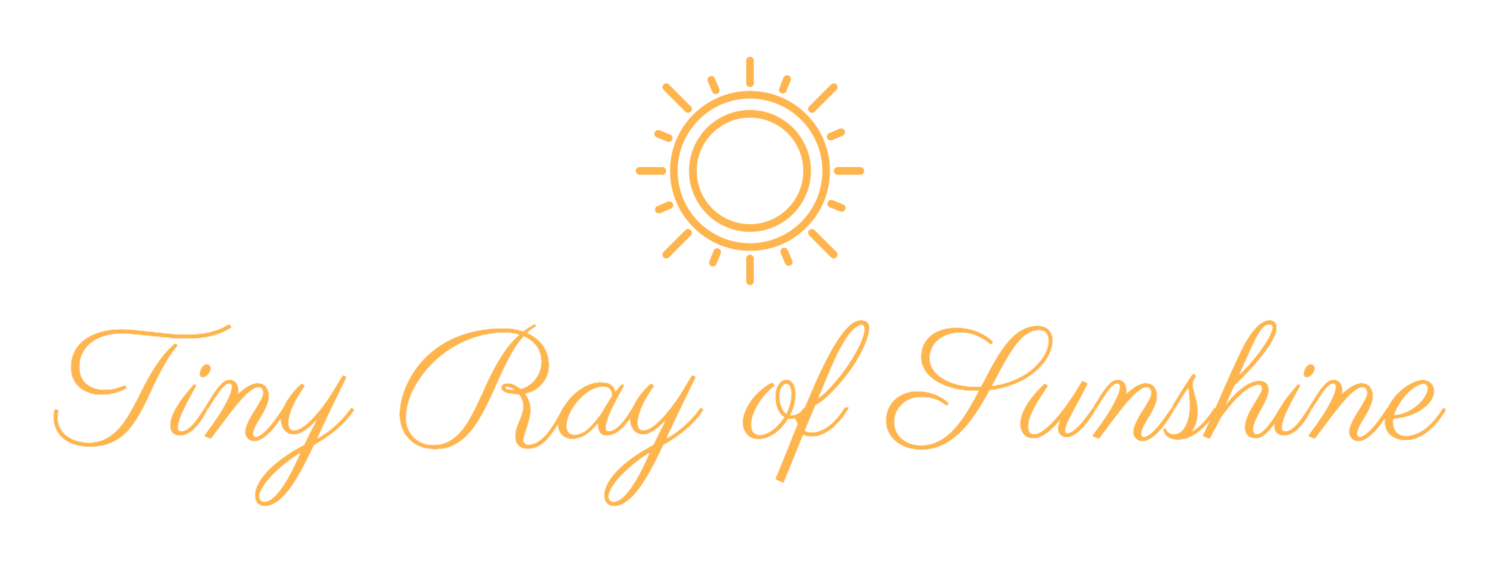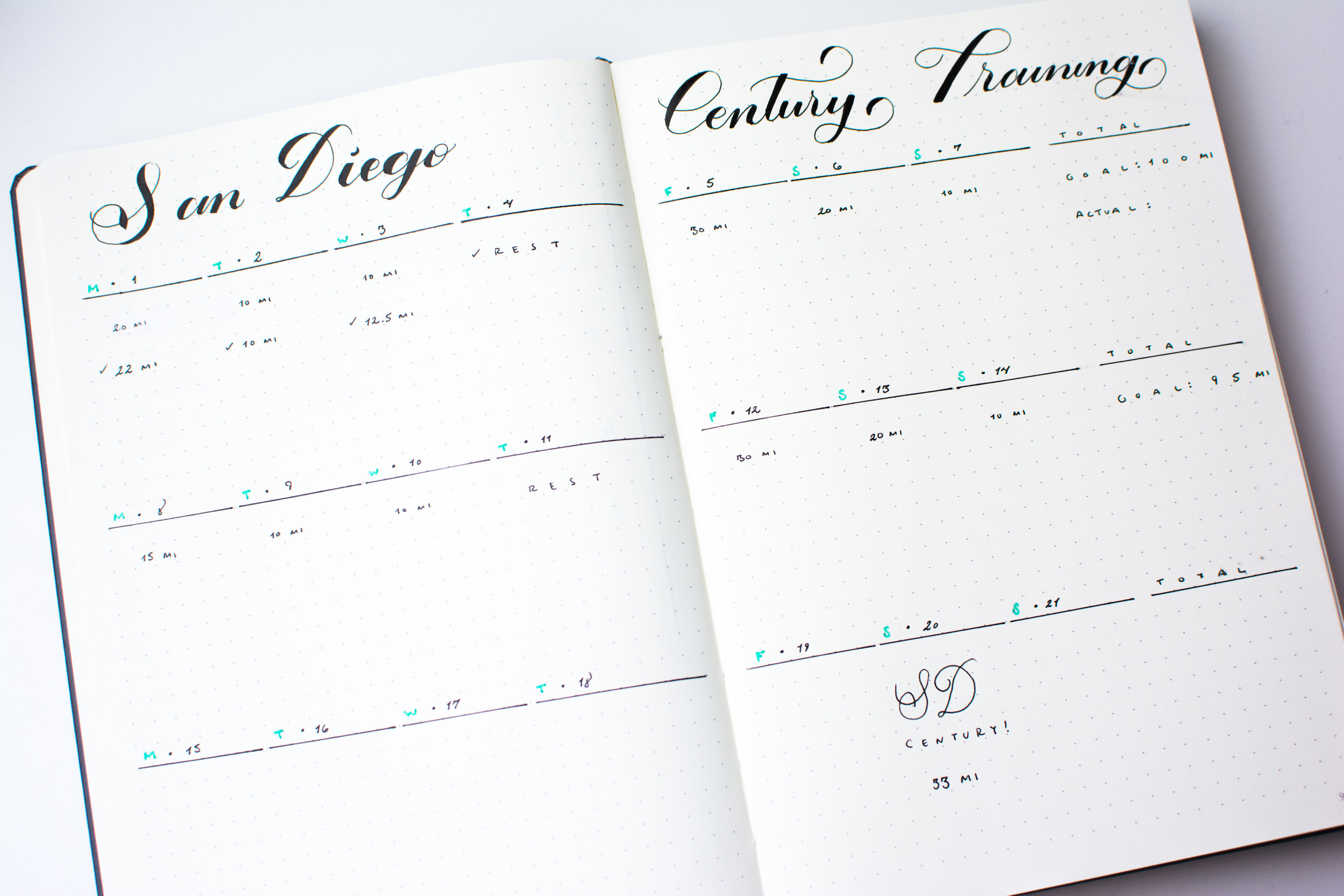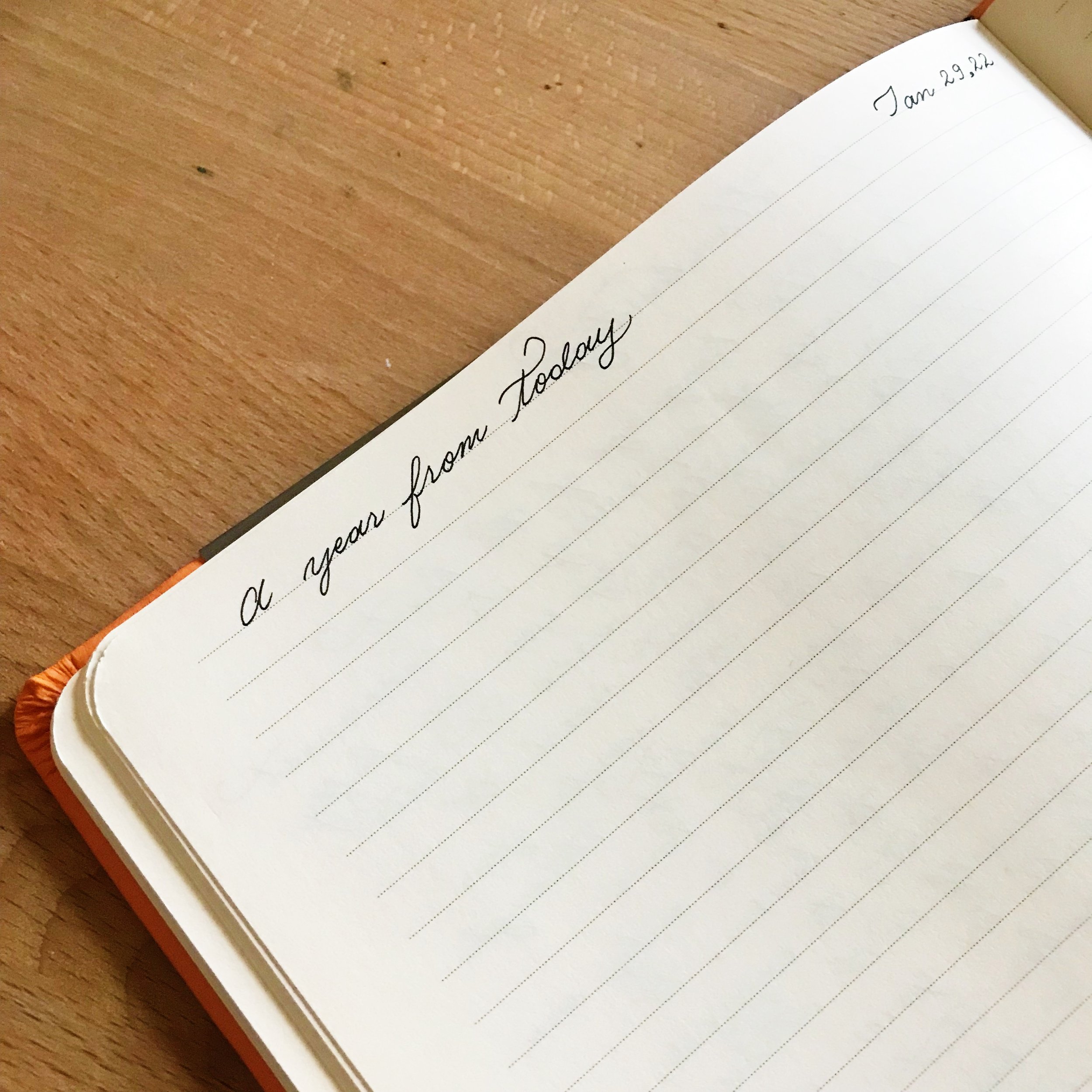#100DaysOfBulletJournalIdeas: 31 - Keep track of your workouts with a Workout Log in your Bullet Journal
/Welcome to Day 31 of my #100DaysofBulletJournalIdeas Project!
Idea 31: Workout Log
Workout Log
Oh man, let me preface this idea by saying that there are so many different ways you can set up a workout log.
Whether you prefer working out at home, at the gym, hitting the pavement, cycling (are you as cycling-obsessed as I am? haha), or anything else - I'm sure you could find endless ways to set this kind of log up.
What's worked for me, time and again, has been setting up a workout plan that I can visualize in weeks. By this, I mean that I need to be able to see the weeks flowing together along with a reminder of what the plan is and goals. This comes very naturally to me and it varies depending on my activity and how I want to quantify it, but I'll do my best to break down my process and advice on how to set up your own workout log in this article. :)
How to set up a workout log:
How your workout log looks will vary, but here are the principles that I recommend considering when creating yours.
1. Pick an activity
Are you into strength-training, body-weight exercises, running, cycling, dancing, or another fitness activity? Pick the one(s) that call out to you.
Choosing a fitness activity will determine the next series of steps, so choose something and run through the list to figure out your workout log.
For example, whether you go to the gym or stay at home to work out, you'll probably have a list of exercises with a certain amount of sets and reps for each. However, if you're running or cycling, you might have a time or distance goal which will result in different types of workout logs.
Whatever you decide, choose something that you are interested in and let's move on to the next step! Please make sure to choose something because you're interested in it and not because you feel like you 'have to.' If you end up not liking your fitness activity, try something else, there's bound to be something out there that invigorates you.
2. Create a goal.
Consider why you've chosen your activity of choice. Is it because you want to feel fit, gain strength, feel more energetic, be healthier, or because you love it?
Creating the right fitness goal will take a little while to think about, but it'll be worth it when push comes to shove and you're churning out those last arm curls or that final stretch out in the world.
Ask yourself, "what do I want out of this activity?"
Create a personal challenge for yourself. Do you want to lift x-amount of weight? Do you want to beat your mile/km time? Do you want to see how fast you can go? Push yourself. That's the only way you'll create lasting change with your body, and if you're interested in sculpting your body, you're going to have to work it.
Figure out a goal that excites you. Don't choose something because you think it's what you 'have to do' or because everyone else is doing it. Your life is unique and so are your interests, working out is no different. Experiment with different activity types. Once you discover the activity that fuels your heart and gives you that rush to keep pushing yourself and improving your strength, figure out how you can get more out of it if that's what you want out of it.
If you've been going to the gym for a while, a goal could be to lift a certain amount of weight if you're into that sort of thing. If you've been getting yourself back into running or walking, you could decide on a 5-10k or a step goal. If you've been cycling, you could adventure around your town and possibly even sign up for an event.
Remember that life is fluid, if your goals were working for you but now your interests have changed or evolved, feel free to update your goals. There's absolutely nothing wrong with recreating your goals as often as desired.
3. Define and create a ‘why’ statement.
This is very closely related to creating your goal, but I wanted to make this its own step because defining your 'why' is a very special thing that goes beyond creating a goal by putting your heart into it.
Considering why you're working out can go a long way into helping you stick to your fitness activity.
This comes down the to nitty gritty of why you're doing what you're doing in terms of this fitness activity. Make sure to make it personally emotional so that when you have those days - and we all have those days - where you're not feeling your workout, you can think back on this to reignite your fire.
Examples of my own goals:
- Running: It centers me, clears my mind, & makes me feel good.
- Cycling: I love the feeling of gliding through the air and pushing myself while enjoying the adventure.
As you can see, these are short and simple statements that completely resonate because they're true for me. When I think about these statements, it gives me those warm fuzzy feelings of how much I love running and cycling and it's almost like muscle memory where when you get into that state of mind, you just know what to do.
When you lace up your shoes and head out the door for a run, you're completely there. When you sit on the saddle and glide out around town with the wind to your back while you're pedaling -there's nothing quite as freeing or invigorating as pushing your body to fully exist in the moment. Working out with an activity that makes you feel incredible is one of those life secrets that connects your body and mind and makes you experience life in a deeper way.
4. Create a fallback statement.
What happens if you don’t feel like working out? Well, you might stay home and lounge with some of your favorite shows or do something else.
A fallback statement, though I think there's another word for it that I can't put my finger on right now, is a statement that you fall back on when you're about to make an excuse against your goal.
This will be your grounding statement when you have those harder moments, but it's important to create this encouraging message to yourself because there's a reason you decided to do this activity and this statement can help remind you of it.
Create a fallback statement by writing down an encouraging statement for when you’re not feeling like working out, whether because you’re not feeling up to it, feeling depressed, or because of another reason.
To create it, imagine you're writing an encouraging message to someone you care very much about. What's something you might say to them if you saw them struggling and needed some encouragement toward their fitness goal? (Assuming your fitness goal is their fitness goal for the sake of this example). Make sure to write that down and say it to yourself. It will be a powerful piece of encouragement to read when you're not feeling up to it, or you feel the self-doubt of not seeing progress or plateauing.
Remember to be kind to yourself, you're the voice in your head. Make sure you're saying kind things to yourself and that the thoughts going on in there are conducive toward what you do want.
5. Commit to a timeframe.
When you are just getting into fitness activities, it might seem pretty daunting. There are so many different choices for activity types. 'What kind of activity to do? What do I need? When will I find the time? Oh man, this is hurting my head, I'll order just order some pizza and think about it tomorrow.' Sound familiar?
Take a breath. It'll all be okay.
Pick a timeframe. I recommend giving it the weekend. I know! It sounds so silly, but seriously, whenever your weekend is, take a day or two and try out the activity. See how it goes. I like the idea of picking ridiculously easy goals and timeframes to start with because that helps to get the momentum going. Want to start running? Toss on some shorts and step into your running shoes and get out the door and run for 15 seconds. That's it. Not too bad right? It was so ridiculous that it worked! Make it extremely easy for yourself.
Pick a timeframe in terms of the length of the activity for the moment at which you'll do the activity (e.g. 10 minutes) AND pick a timeframe in terms of how long you'll try out the activity for in terms or weeks or months.
6. Consider your schedule for the week.
Look at what you have going on during the week in the non-negotiable areas of your life such as work, school, studying, picking up your kids, etc. Aim to make time for your fitness activities. Once you take stock of what you have going on, it makes it easier to see where you have free time or can create pockets of time to devote to working out.
Not having enough time is probably the most popular excuse not to work out, and though I do think it's possible to still make time, I understand that this may ring true. If this is true for you, what I recommend is working in activities into your day-to-day, for example, parking further away, flexing your butt as you walk up the stairs, walk at a faster pace, do a few lunges and squats in the bathroom, push-ups against the counter - anything to help you get your blood flowing. It's good for your brain and your heart to move a little throughout the day, not to mention that it helps you think much more clearly.
Look at your schedule to devote pockets of time to your activities. If your health is important to you, taking care of your fitness is one of the most impactful ways you can improve your life and state of mind.
An example of how this all works together
I'm going to walk you through how I set up my workout log for running based on the steps above:
1. Pick an activity: Running
2. Create a goal: Run every other day
3. Define and create a why statement: It center me, clears my mind, & makes me feel good
4. Create a fallback statement: One step at a time
5. Commit to a timeframe: For a year
6. Consider your schedule for the week: It's every other day, some months it's on the odd days and others on the even days. Last year I set my goal to run every Tuesday, Thursday, and Saturday.
The year-long Running Log I created with my goal for the year at the top along with my 'why' statement across the top and an encouraging message at the bottom for those harder days.
Based on all of this, I decided that this year calendar format would be perfect to align with my running since I just cared about tracking the fact that I ran, speed and distance were not things that I tracked because I felt this to already be a pretty ambitious goal to take on.
Workout Log Ideas:
1. Week-by-week
In a calendar format, you can figure assign your workouts to days. Here I have written down the goal, and underneath that the actual amount completed. I also write down what route I did, but didn't include it here for the sake of privacy.
A simple workout log with days, goals, and actual miles cycled in a week-by-week format.
2. Weekly format
Similar to the above, but one week at a time. This is helpful to have if you assign different workouts, either by cardio or body groups, to different days.
3. A workout log with columns
Here you would have columns for the exercise, sets, and reps along with the date. This allows you to focus on one body group at a time.
Tips:
- Make it emotional
- Think about your 'why'
- Create a goal that excites you.
- Think about what you'll be gaining. Focus on the gains.
- Make working out so ridiculously simple, you can't help but do it.
- Bonus: Work out with a buddy! Working out with a friend to do an activity you love is probably the absolute best thing ever. This is more likely to work in person because you are both right there encouraging each other by having fun and pushing yourselves.
If you're a runner and would like some more running log inspiration, please check out this lovely article from Runner's World Magazine, which I had the honor of being featured in this month's issue!
P.S. If you're new to the Bullet Journal®, I recommend checking out BulletJournal.com, it was invented by Ryder Carroll. Ryder is an awesome human that walks you through how to set up your own Bullet Journal with his handy tutorial video that you can check out at BulletJournal.com!
Supplies Used:
Some of the links used in this article are Amazon Affiliate links, such as the items below, which means that if you make a purchase through them, I will make a commission at NO extra cost to you. Thank you for your support in helping keep Tiny Ray of Sunshine running!
Kuretake Brush Pen Silvey Gray












